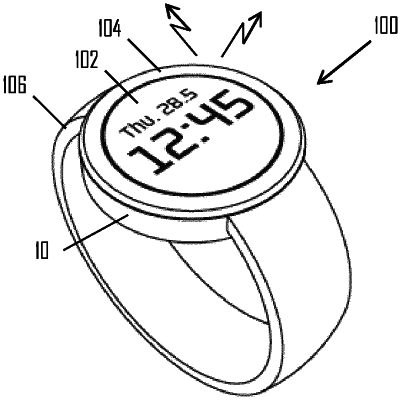| CPC H01Q 1/273 (2013.01) [H01Q 5/35 (2015.01); H01Q 9/0457 (2013.01); H01Q 9/0464 (2013.01)] | 6 Claims |

|
1. A portable training computer, comprising:
a casing;
a bezel coupled to the casing;
a radio frequency radiator circuitry comprising an antenna formed of the bezel;
a first signal feed configured to receive or output a first radio signal and a second signal feed configured to receive or output a second radio signal; and
within a waterproof compartment of the casing and the bezel,
an antenna feed circuitry between the signal feeds and the antenna, comprising a feeding element configured to couple capacitively to the antenna, a first feed line coupling the first signal feed to the feeding element, a second feed line coupling the second signal feed to the feeding element, and a diplexer circuitry configured to isolate a frequency band of the first radio signal from a frequency band of the second radio signal,
wherein the diplexer circuitry comprises a first signal line having a first length and a first mutual coupling surface with the antenna, the first coupling surface defined by a first contact point where the first signal line connects to the feeding element, to form a pass band on the frequency band of the first radio signal, and a second signal line having a second length and a second mutual coupling surface with the antenna, the second coupling surface defined by a second contact point where the second signal lined connects to the feeding element, to form a pass band on the frequency band of the second radio signal, wherein the isolation of the frequency bands is realized by the first signal line and the second signal line,
wherein each of the first signal line and the second signal line forms an LC filter where a desired capacitance is formed by the capacitive coupling between the feeding element and the respective first coupling surface and the second coupling surface, and where a desired inductance is formed by the length of the respective first signal line and second signal line and/or by a travel path of the respective first signal line and second signal line, and wherein the first signal line has different LC parameters than the second signal line to realize the isolation of the frequency bands.
|